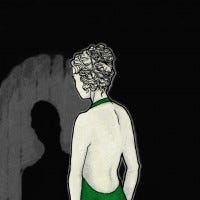Writer and designer Emily Short examines and refuses the 'pretentious' label often assigned to games like Home and The Graveyard, and dissects the efficacy of art games -- now and in the future.

[In her new Gamasutra column, writer and designer Emily Short refuses the 'pretentious' label often assigned to games like Home and The Graveyard, and examines the efficacy of art games now and in the future.] I hate the word "pretentious" in art criticism. I understand why people use it. Often we call something pretentious when we think the artist might be concealing a lack of meaning or vision behind obscurity, jargon, or a set of conventions currently hallowed by the art establishment. It's a way of saying "I don't get this, and I don't know that there's anything to get" that shifts the blame (if blame even applies in so subjective an area as one's response to artwork) onto the artist rather than ourselves. Two things I don't like about this approach. First, it operates from an instinct of contempt. Labeling an artist pretentious assumes the worst about someone whose motives aren't knowable. Second, it says nothing, nothing at all, about the work itself. It's all about the artist. Two Edges Recently I've played two games about old age and the approach of death that have been tarred as "pretentious", as well as boring and ungamelike: Home, by Stephen Lavelle, and Tale of Tales' The Graveyard, from last year. ("Pretentious" citations for The Graveyard: 1, 2, 3; for Home, with some discussion, 1.) I consider these two works edge cases when it comes to criticizing games. Home is very brief and lacks just about everything that might make it appealing on aesthetic grounds. The graphics are the retro-pixellated stuff that has become obligatory for certain kinds of Art Game these days. The dialogue, such as it is, is not especially riveting. Nonetheless Home does have gameplay, and the meaning of the work arises procedurally from the rules rather than from any exterior framework. It uses its interactivity to express the helplessness of an elderly man as he tries to feed himself, use the toilet, and sleep when he needs to. The player is allowed to try to satisfy these needs, but the timing is such that he will not be able to, and instead will lose control over each function in turn. It's an intentionally frustrating play that spirals into failure and predictable death, with the interactivity giving the player just enough space to struggle against that frustration. On an adjacent edge is The Graveyard, which has virtually no gameplay. The interaction consists of steering an old lady who walks very slowly towards a bench. Then she sits down (not thanks to anything you do, mind), and a song plays. You can perhaps make her stand up and walk out again, or not. The only real exercise of choice you have is to end the game prematurely without seeing all of the content. Even that option may be taken away in the event that the old woman dies, which she may do at random if you have the game's full version rather than the demo. The Meaning In Limitations To the extent that interaction matters in this work, it is to emphasize constraint: the degree to which the woman is limited in speed and agility, the degree to which the player cannot even control the full range of her limited abilities. But even this matters very little. Tale of Tales has done its best to discourage the player from even thinking the game might be more interactive than it is. Pressing ESC during play will bring up a complete walkthrough that describes everything that is possible to do in the game, lest the player be tempted to try to explore or leave the prescribed path in any way. On the other hand, The Graveyard is the product of great craft and care in the environment. Though it is in black and white, there is a kind of lushness about the visuals, and the soundscape of animal sounds and fading urban noise is meticulously constructed and evocative. Tale of Tales excels at atmospheric work. Both Home and The Graveyard are exploring what can be done to express emotions and states not commonly found in games. The positive reviews they've received by and large applaud them for this. I share this admiration. (I've now written up two other works by Tale of Tales, both of which I found to some degree frustrating, so it's perhaps curious that I was excited when I saw the promotion for The Graveyard that allowed me to download the full version for free. Clearly there's a disconnect here between my enjoyment of these works while playing and their long-term value for me. Perhaps I will feel the same about The Graveyard, though of the three it is plainly the slightest in both duration and significance.) At the same time, I found both pieces unsatisfying, in related ways. I would like to explore why, though with the word "pretentious" off the table. The Challenge In Art Home is very simple. It takes only a couple of minutes to play, but that is much longer than it takes to grasp the game's message: that dying is slow, horrible, and undignified, and that our attempts to mediate the process for the elderly may make things even more undignified by stripping them of any agency. It is challenging to create art around a direct message of this kind and have the result seem like anything but propaganda. And Home is not even very strong propaganda. The most effective procedural propaganda works by presenting the player with what at least appears to be a valid simulation, and allowing the player to discover the rules embedded inside that simulation and to draw his own conclusions. Home, by contrast, tips its hand from the start. The situation is obviously rigged; it is plain that we will never be able to save the old man; there is no point in struggling very hard with the game nor in replaying to try to achieve a better outcome. By using the extremely basic graphics, Lavelle is presenting Home to be read in context with other entries in the same aesthetically minimal genre of art game -- most notably, Passage and The Marriage. Works in this genre tend to offer some universalized observation about human existence. The format of Home thus offers us a clue about what kind of content we may expect from it, but in practice it lacks the slow reveal of those other works. The Graveyard does not have a message in the same way. It is more about presenting observations (here is what an old woman looks like; here are what her thoughts might be, presented as song). Instead of being blunt, it is vague, allusive, and obscure. We may hunt for a significance, but we have no way of being sure we've found one. There is not a story as such. Nonetheless, the presentation of the game -- the black and white images, the deliberately sluggish controls, the fact that a complete walkthrough is built into the instructions -- all indicate that we should expect to read this game differently than we read other games. But it does not (in my opinion) succeed in leading the player toward an alternate mode of engagement. But, to my mind, Tale of Tales is saying to the player, "here, you figure out how to play this work in such a way that you get something out of it!" -- and in doing so, is abrogating one of the designer's responsibilities, which is to offer the player a way in. The most interesting part of the work is the song, which becomes, in the absence of interaction, a quirky music video starring a computer-generated 3D grandma. So both games involve formal choices that encourage the player to read and understand them in some alternative, not-mainstream-gaming way, but yield deficient or ambiguous rewards when they are so approached. (In my opinion.) The Short Shelf Life Of Conceit A second point: both rely too heavily on the conceit of interaction denied. There is a tendency in some art games to derive the artistic impact from refusing to let the player change things, from the conflict between what the player wants to achieve (and thinks he might be able to achieve) and what the designer has chosen to allow. At its simplest, the gimmick is to get the player to try to do something impossible, and then wait for him to give up. But the more art games do this, the less effective the technique is -- especially in works that identify themselves formally with an art game movement. I might feel much differently about Home had it been the first game I ever met in which the rules were deliberately stacked against me. I might even feel differently if it had been dressed as a casual game, with perky cartoonish graphics and a reasonable degree of polish: that's a game genre in which I still expect to be able to win. But with its graphical style, it didn't stand a chance of misleading me. Art games have their own conventional styles, just as commercial games do, and it is possible to be lazy or careless in choosing to share those conventions. Home falls into this trap. The Graveyard is less derivative, but still suffers from the non-surprise of its constraints and limitations. This is what happens when a medium ages. What used to be surprising loses its power. (Compare: "Pulp Fiction" viewed in 1994 vs. "Pulp Fiction" viewed today.) We either have to find some new audience expectations to subvert, or use interactivity to an aesthetic effect that doesn't require the audience to be surprised. (Disclosure: I played free copies of these works. Home is free, and The Graveyard I downloaded when it was offered without charge as a Halloween special. I have had no commercial dealings with the authors of either.) [Emily Short is an interactive fiction author and part of the team behind Inform 7, a language for IF creation. She also maintains a blog on interactive fiction and related topics. She can be reached at emshort AT mindspring DOT com.]
About the Author(s)
You May Also Like








